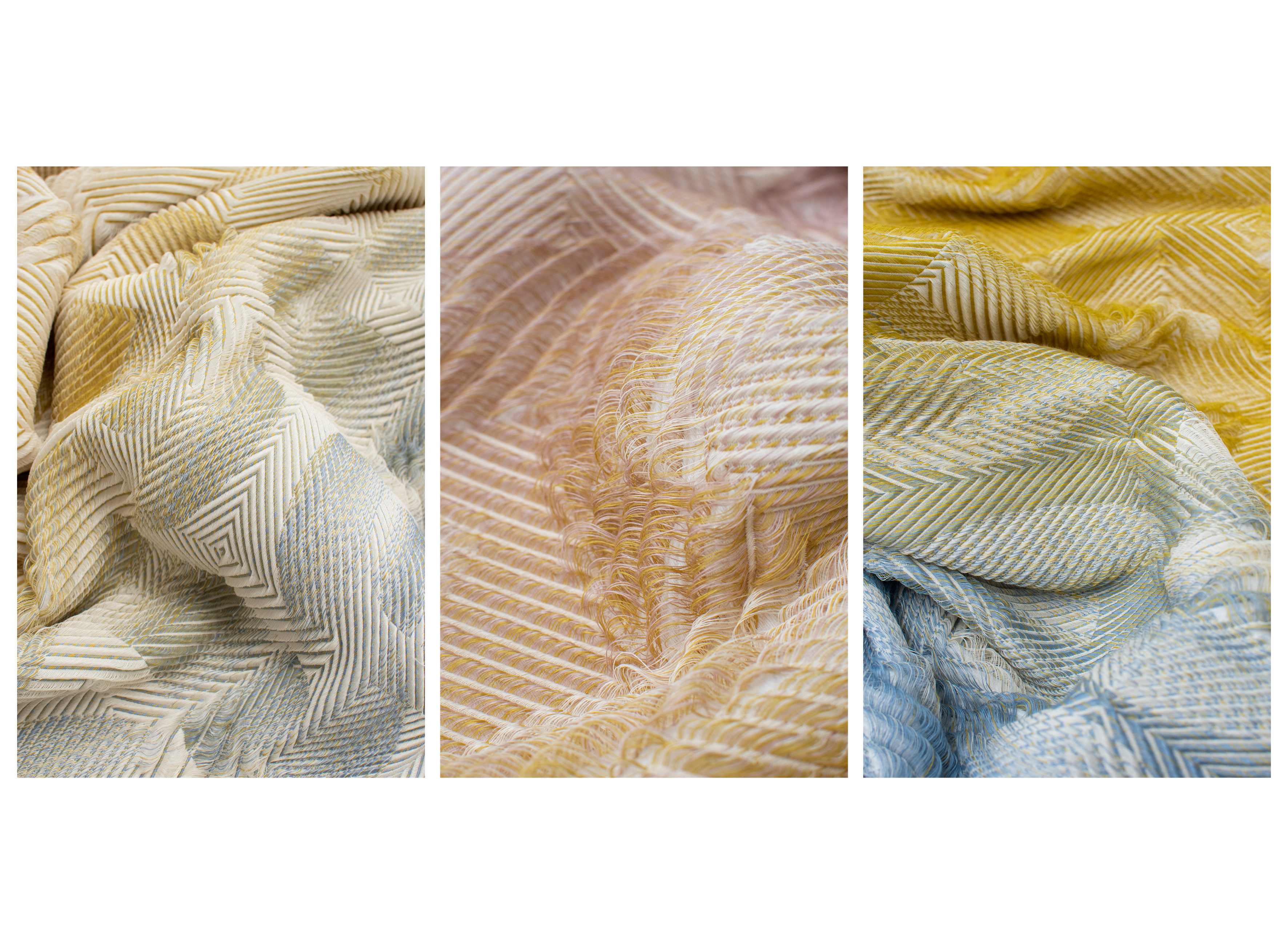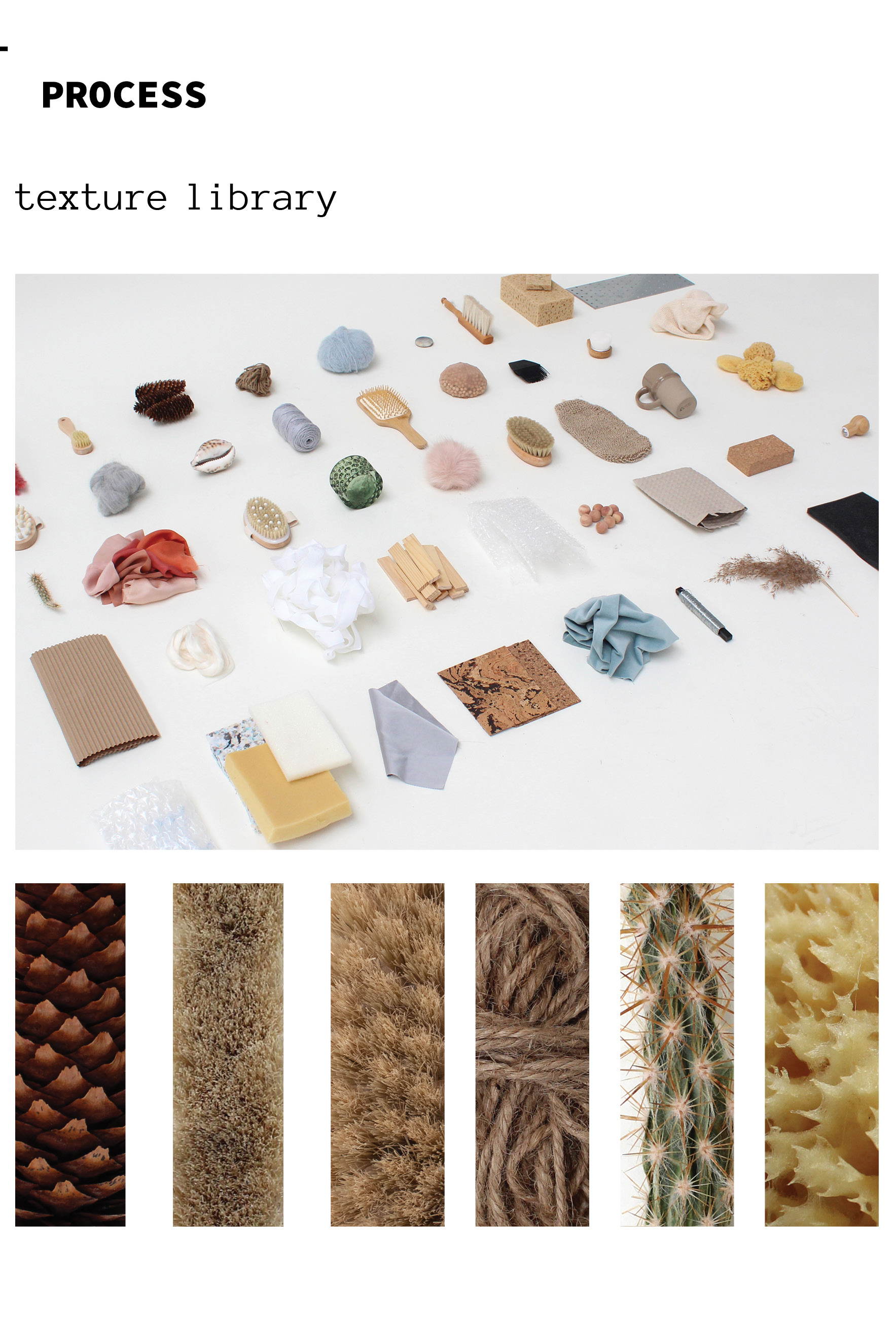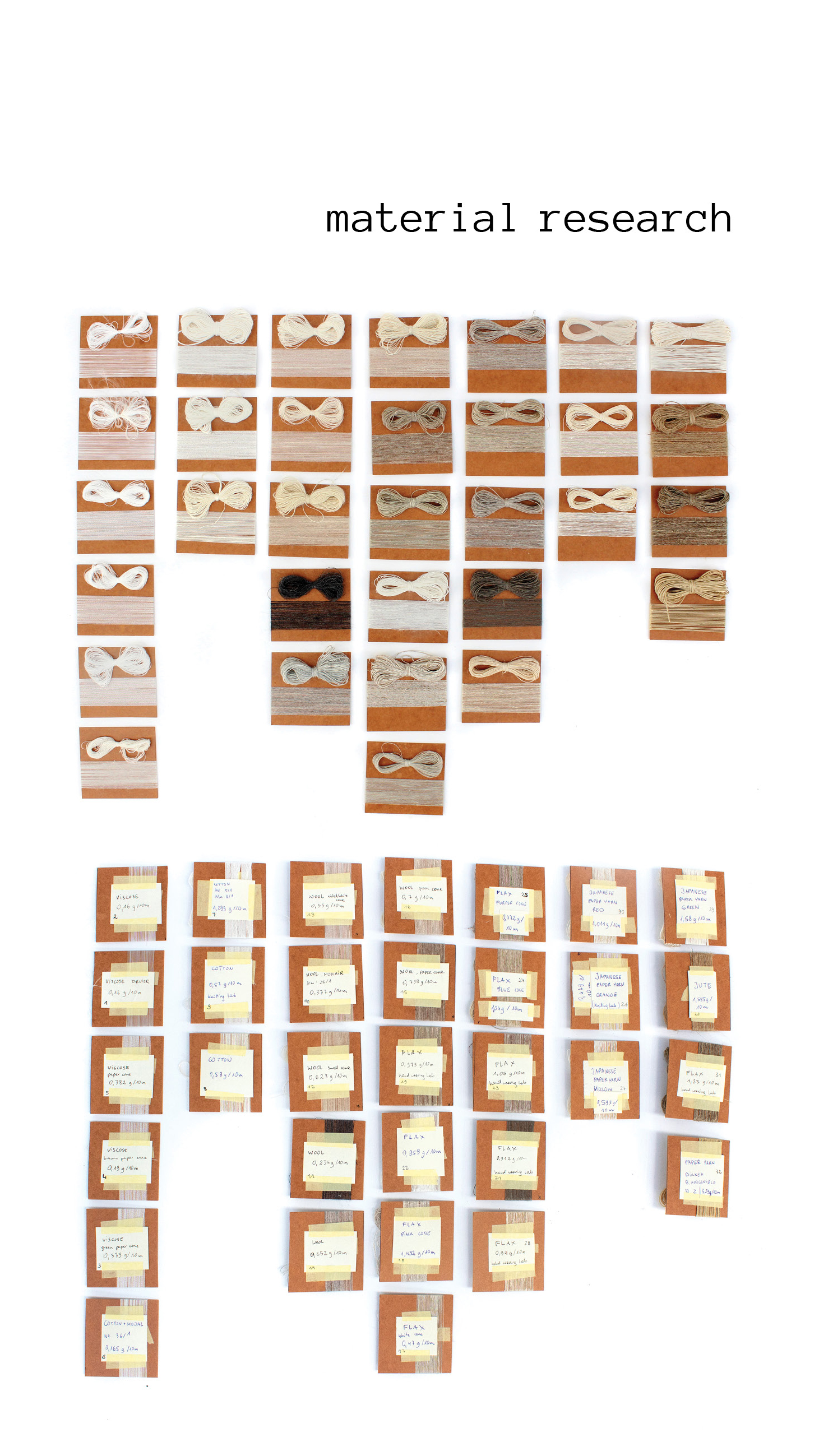
- Soft or Not
- The Swedish School of Textiles student projects

The project explores textures from the most important and independent scales: smooth-rough and soft-hard. It investigates the change of sensation intensity dependent on the weaving bindings, their scale and materials. It contributes to building an awareness of the weaving technique components in relation to the tactility of textiles. The five pieces focus on the gradual change of the textures highlighted by the corresponding gradient applied in colours.
Paper yarn, linen, cotton, viscose and elastane.
Zuzanna Wójcik, The Swedish School of Textiles.
Texture is a significant component of object perception. It evokes a consumer’s emotional response to a product and therefore can prolong the product’s life by postponing its replacement. It is also closely connected with pleasantness and mental well-being. It can be used to lower the level of stress and anxiety through the release of oxytocin while touching soft and smooth surfaces.








All group objects:
Each decision during product development affects sustainability and circularity. To develop products with lower environmental impact, the design team needs to be well aware of each component and process, and their individual and combined effect on the final product and its longevity.
One challenge is having comprehensive knowledge regarding sutainability when it comes to all of the components and processes that are a part of the production and lifetime of the garment. An additional challenge is implementing alternative design methods that do not require virgin components. Ongoing research inspires and shows methods to re-make existing products to have new functionalities and designs with an upgraded look.
With higher traceability when it comes to materials, components, and processes, there are increased possibilities for more conscious decisions. If communicated well, this gives the consumer a better basis for decisions.